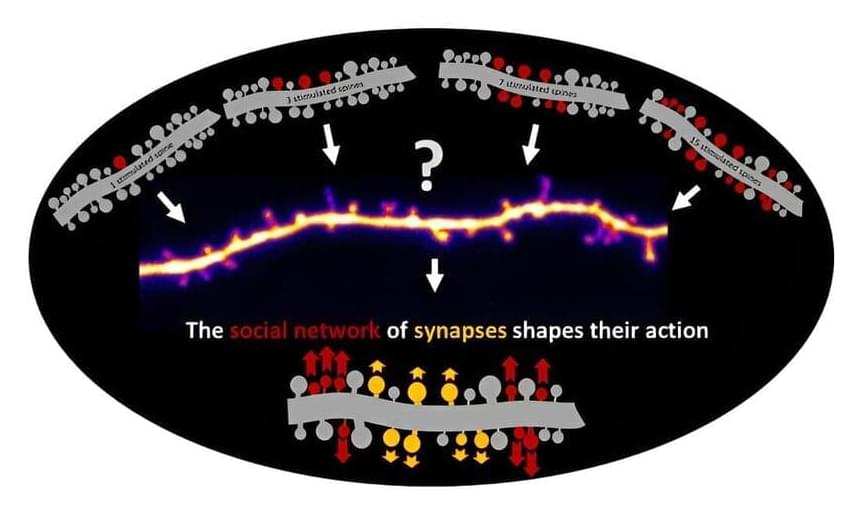Neurons in the brain are like vast networks, receiving thousands of signals from other neurons through tiny structures called synapses.
Researchers from Bonn and Japan have clarified how neighboring synapses coordinate their response to plasticity signals: Nerve cells in the brain receive thousands of synaptic signals via their “antenna,” the so-called dendritic branch. Permanent changes in synaptic strength correlate with changes in the size of dendritic spines. However, it was previously unclear how the neurons implement these changes in strength across several synapses that are close to each other and active at the same time.
The researchers—from the University Hospital Bonn (UKB), the University of Bonn, the Okinawa Institute of Science and Technology Graduate University (OIST) and the RIKEN Center for Brain Science (CBS)—assume that the competition between spines for molecular resources and the spatial distance between simultaneously stimulated spines affect their resulting dynamics. The results of the study have now been published in the journal Nature Communications.
Neurons are the computing units of the brain. They receive thousands of synaptic signals via their dendrites, with individual synapses undergoing activity-dependent plasticity. This synaptic plasticity is the mechanism underlying our memory and thinking and reflects long-lasting changes in synaptic strength.
